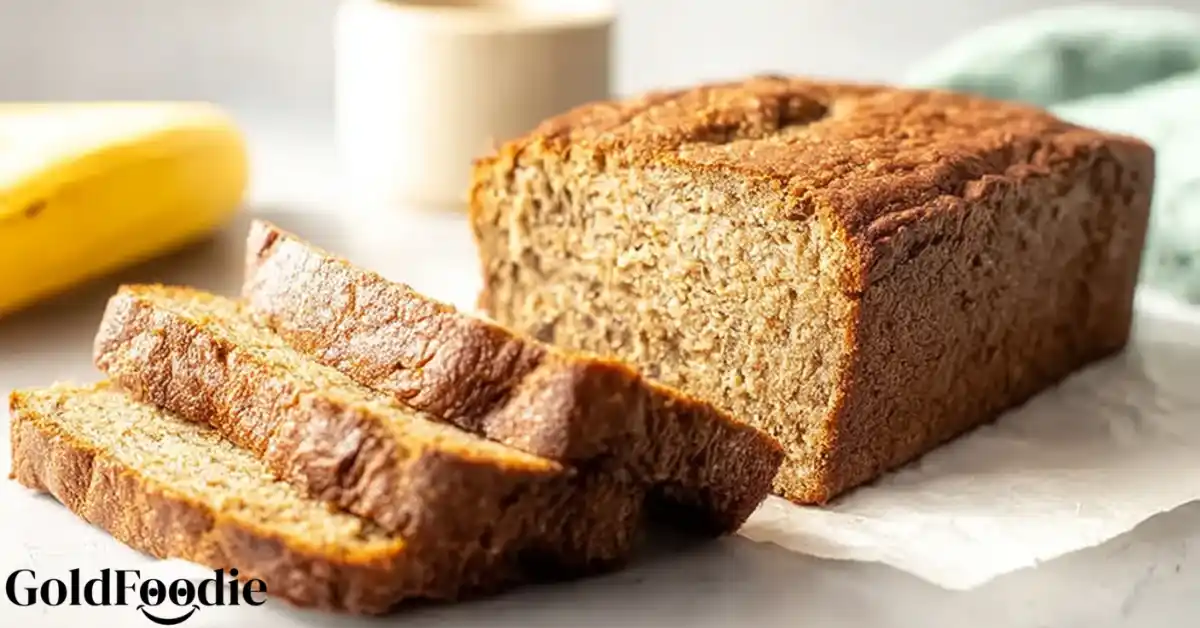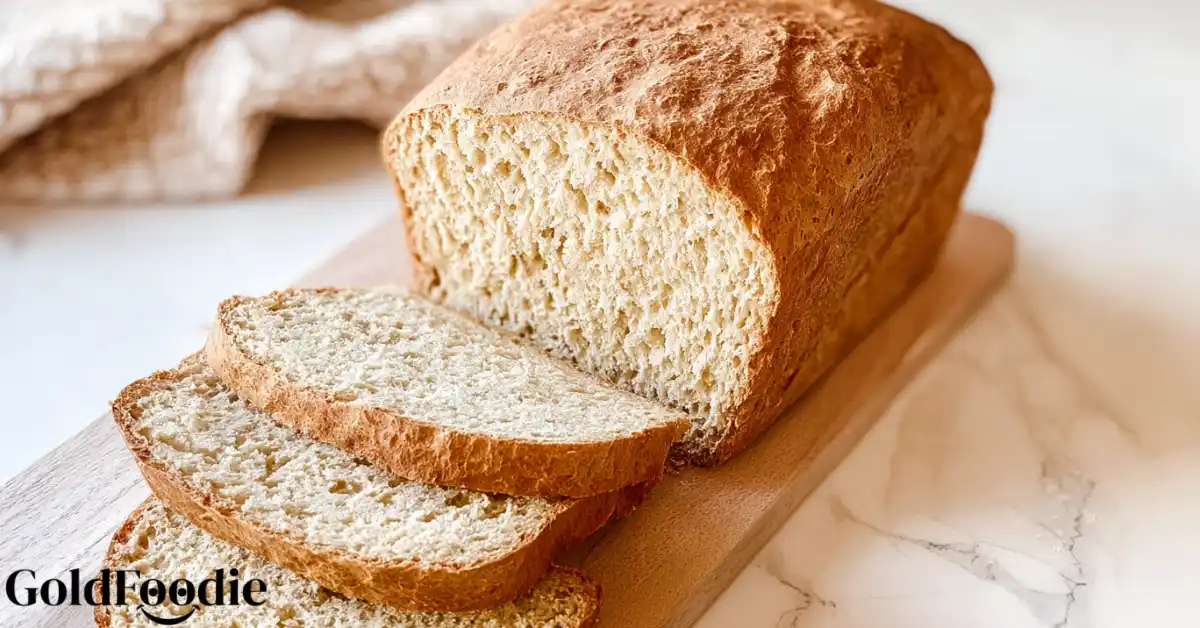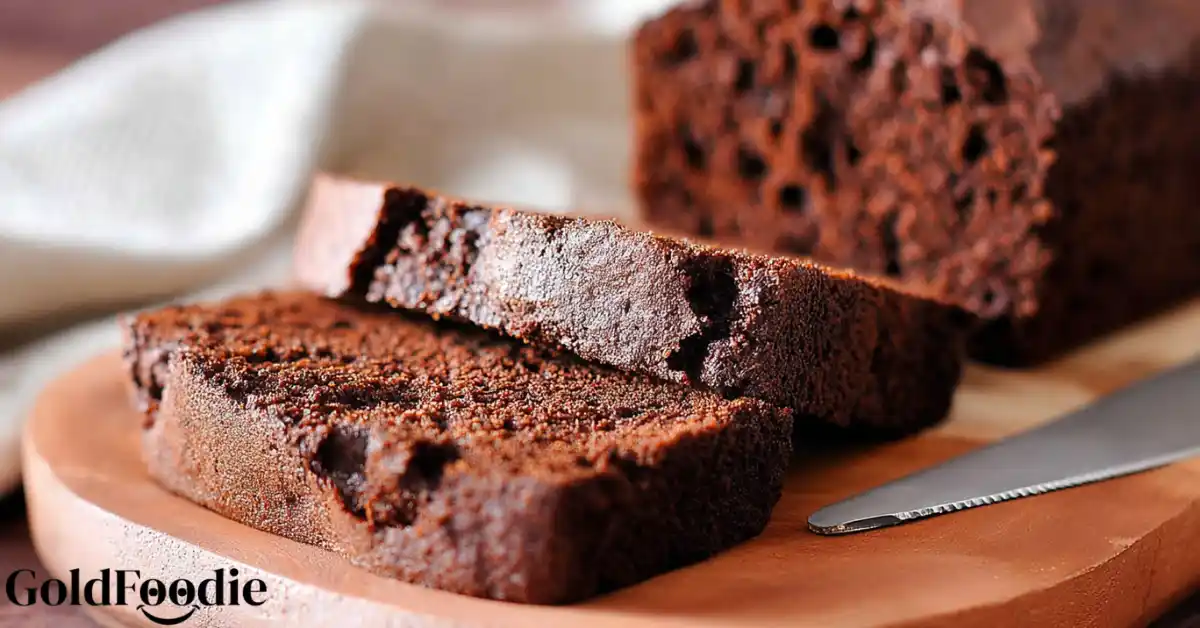Finding bread that is both delicious and suitable for a diabetic lifestyle can feel impossible. Many options turn out dense, dry, or overly complicated to prepare. This Buckwheat Bread changes that by delivering a soft, flavorful artisan loaf packed with nutrient-rich seeds.
This recipe supports stable blood sugar while giving you the texture and taste you expect from great bread. It is simple to make, yet it offers the satisfaction of a bakery-quality loaf. You will also get dietitian-approved tips, full nutritional details including net carbs, and clear answers to the most common baking questions.
Table of Contents
Why This Bread is Excellent for Blood Sugar Management
The Power of Buckwheat Flour
Buckwheat Bread is made from buckwheat, which despite its name is not related to wheat and contains no gluten. This seed has a lower glycemic index compared to many other flours, helping to prevent rapid blood sugar spikes. It is also rich in fiber and important minerals like magnesium, which play a role in supporting overall health.
The Seed Trifecta: Chia, Flax, and Sunflower Seeds
Chia, flax, and sunflower seeds add more than just flavor to Buckwheat Bread. Their high fiber and healthy fat content slow the absorption of carbohydrates, helping to keep blood sugar steady. Chia and flax seeds also work as natural binders, creating structure in the bread without the need for eggs.
Psyllium Husk: The Secret to Great Texture and Gut Health
Psyllium husk gives Buckwheat Bread a soft, bread-like texture even without gluten. It is an excellent source of soluble fiber, which benefits both digestive health and blood sugar control. The combination of psyllium with other high-fiber ingredients makes this loaf satisfying and supportive for a balanced diet.
A Dietitian’s Note on This Recipe
A registered dietitian explains that the blend of buckwheat, seeds, and psyllium provides a steady release of energy and supports stable blood sugar. This makes Buckwheat Bread a smart choice for those managing diabetes when enjoyed in appropriate portion sizes.
⭐️⭐️⭐️⭐️⭐️
“Buckwheat is gluten free, a complete protein, and a good source of energy, fiber, vitamins B2 and B3, magnesium, phosphorus, and many other minerals… studies show it has a lower glycemic index response and is more satiating than grains like wheat and rice.” Ohio State University, College of Food, Agricultural, and Environmental Sciences
You’ll Also Love
➤ gluten free vegan pumpkin apple bread
➤ Gluten Free Vegan Pumpkin Bread
➤ Gluten-Free Vegan Oat Bread Recipe

Complete Nutritional Information (Per Slice)
These values are approximate and can vary depending on the exact ingredients and portion sizes used. For the most accurate results, calculate the nutrition based on the specific products in your kitchen. This nutritional profile makes Buckwheat Bread a smart option for those aiming to manage blood sugar while enjoying satisfying meals.
- Calories: 145
- Total Carbohydrates: 18 g
- Dietary Fiber: 6 g
- Net Carbs: 12 g (calculated as total carbohydrates minus dietary fiber)
- Protein: 5 g
- Fat: 6 g
The combination of moderate carbohydrates, high fiber, and balanced protein and fat content helps make Buckwheat Bread more filling and less likely to cause sudden changes in blood sugar.
Ingredients Needed
To make Buckwheat Bread with a soft texture and rich flavor, prepare the following ingredients. Grouping them will help you organize your baking process more easily.
For the bread base:
- 1 ¾ cups buckwheat groats (300 grams), rinsed well after soaking
- 2 tablespoons psyllium husks (16 grams)
- 2 tablespoons chia seeds (26 grams)
- 1 cup water (230 ml)
For structure and flavor:
- 3 tablespoons olive oil (45 ml)
- 2 teaspoons baking powder
- ½ teaspoon sea salt
Optional topping:
- A handful of mixed seeds such as sunflower, sesame, or pepitas for extra crunch and visual appeal
Having these ingredients ready before you begin ensures the Buckwheat Bread preparation goes smoothly and helps maintain the right texture in the final loaf.
How to Make Buckwheat Bread
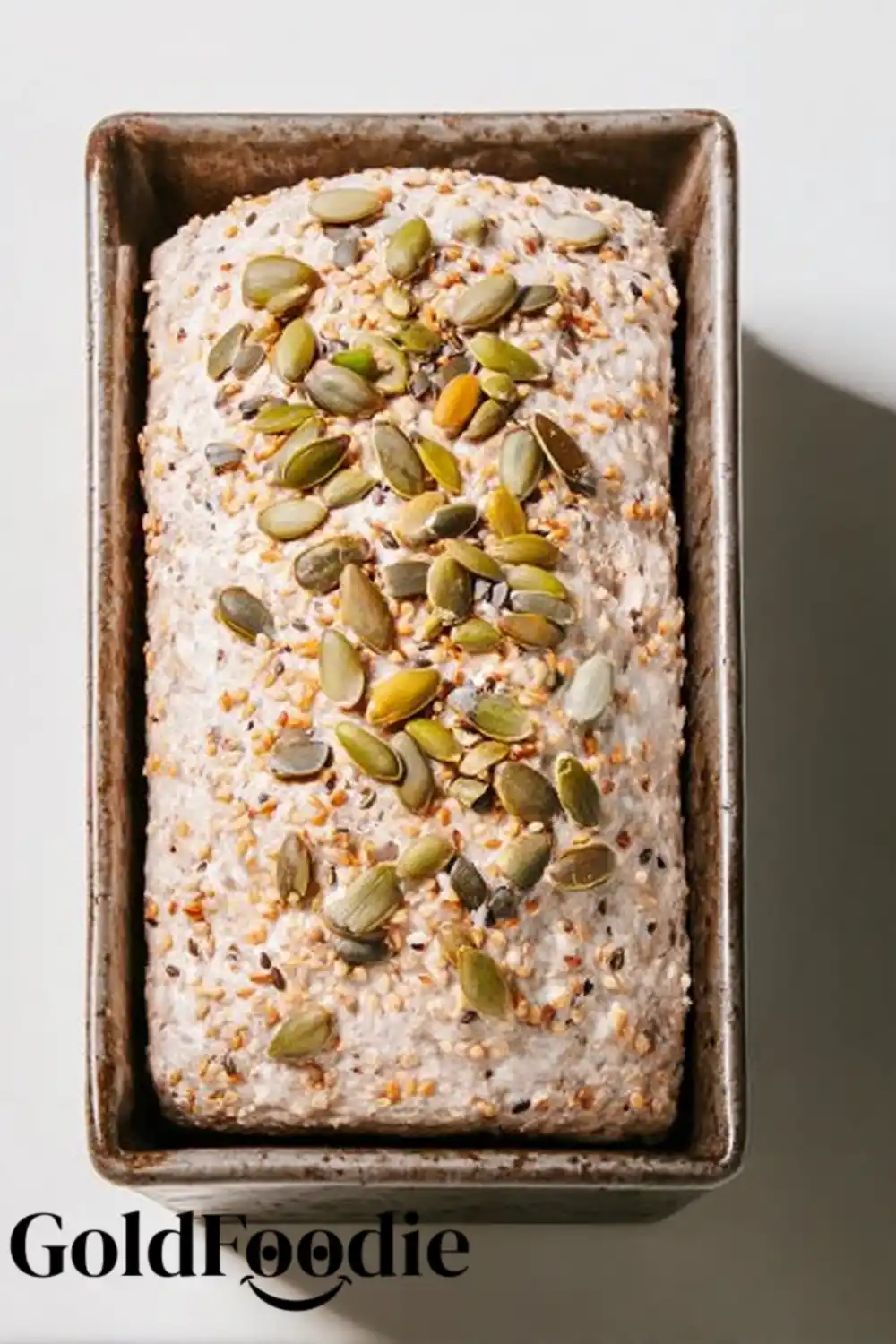
- Soak the buckwheat
Place the buckwheat groats in a large bowl and cover with water. Soak for at least two hours and no longer than eight hours. This softens the grains so they can be crushed easily with your fingertips. After soaking, rinse the groats thoroughly to remove the natural slimy coating and drain well. - Prepare the binding mixture
In a separate bowl, combine the psyllium husks and chia seeds with one cup of water. Stir well and allow the mixture to sit for about ten minutes until it thickens into a gel. This gel acts as the structure-building binder for the Buckwheat Bread. - Blend the batter
Transfer the soaked buckwheat to a food processor or high-speed blender. Add the psyllium-chia gel, olive oil, baking powder, and sea salt. Blend until most of the grains have broken down into a sticky, mush-like consistency. If using a blender, pause to stir the mixture a few times for even blending. - Shape and top the loaf
Line a loaf pan with parchment paper. Spoon the mixture into the pan and use the back of a spoon to smooth the surface. Sprinkle your chosen seeds over the top for added crunch and appearance. - Bake the bread
Preheat the oven to 160°C (320°F). Bake the Buckwheat Bread for 90 minutes, checking towards the end for a firm, golden crust. - Cool before slicing
Let the loaf rest in the pan for a few minutes, then transfer it to a wire rack to cool completely. Cutting the bread while warm can cause the inside to become gummy. Store in the refrigerator for up to a week or slice and freeze for longer storage.

Buckwheat Bread
Ingredients
Method
- Soak the buckwheat: Place the buckwheat groats in a large bowl and cover with water. Soak for at least two hours and no longer than eight hours. Rinse well to remove the slimy coating and drain thoroughly.
- Prepare the binding mixture: In a separate bowl, combine the psyllium husks and chia seeds with one cup of water. Stir and let sit for about ten minutes until thickened into a gel.
- Blend the batter: Add the soaked buckwheat, psyllium-chia gel, olive oil, baking powder, and sea salt to a food processor or blender. Blend until most grains have broken down into a sticky batter, pausing to stir as needed.
- Shape and top the loaf: Line a loaf pan with parchment paper. Spoon in the batter, smooth the surface, and sprinkle with mixed seeds.
- Bake the bread: Preheat oven to 160°C (320°F) and bake for 90 minutes until a firm, golden crust forms.
- Cool before slicing: Let the loaf cool in the pan for a few minutes, then transfer to a wire rack to cool completely before slicing.
Notes
Nutrition Facts (Per Serving)
Calories: 145 | Total Fat: 6 g | Saturated Fat: 1 g | Protein: 5 g | Total Carbohydrates: 18 g | Dietary Fiber: 6 g | Net Carbs: 12 g | Sodium: 160 mg Nutrition Disclaimer: Nutritional information provided is an estimate and may vary based on the products and brands you use. Calculate the actual nutrition values using your preferred nutrition calculator and the exact ingredients you choose.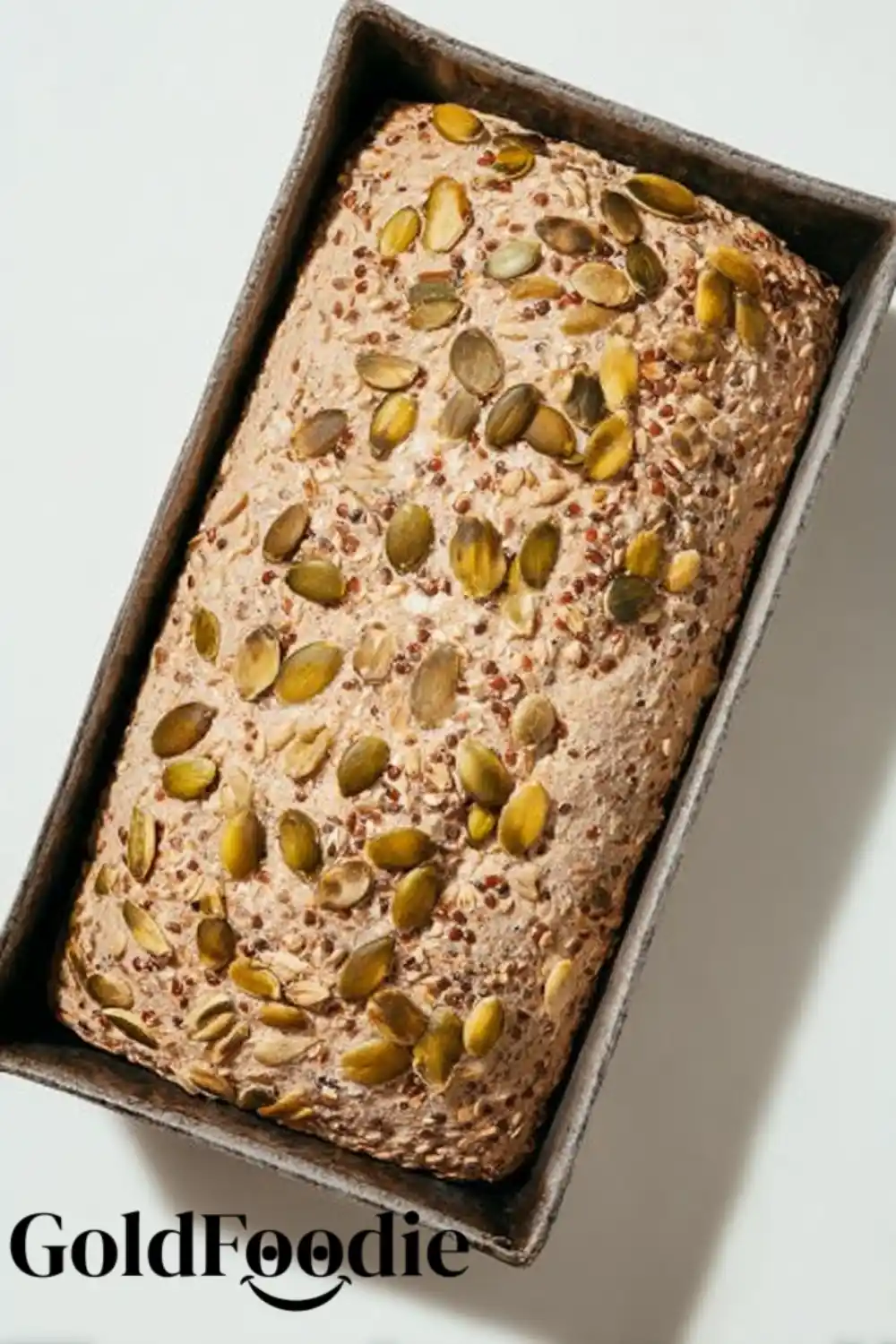
Baker’s Tips & Frequently Asked Questions
How do I store this bread to keep it fresh?
Store Buckwheat Bread in an airtight container at room temperature for up to two days. For longer freshness, refrigerate for up to one week. To freeze, slice the bread first and place the slices in a freezer-safe bag. This allows you to take out only the amount you need.
Can I use a different type of flour or seeds?
You can experiment with other gluten-free flours such as oat flour or brown rice flour. Keep in mind that changing the flour will alter the texture and taste of the Buckwheat Bread. Seeds like pumpkin, sesame, or poppy can replace or complement the chia, flax, and sunflower seeds.
Why is my bread gummy or dense inside?
Gummy texture often happens if the bread is underbaked or sliced before it has cooled completely. Accurate measurements and proper baking time are essential for a light texture in Buckwheat Bread.
Can I make this recipe without psyllium husk?
It is not recommended. Psyllium husk plays a key role in creating the structure and soft texture of Buckwheat Bread. Without it, the bread may collapse or turn out overly dense.
Is it okay to skip the salt?
Yes, but the flavor of Buckwheat Bread will be less vibrant. Salt helps bring out the natural earthy taste of buckwheat and the nutty notes from the seeds.
Is buckwheat bread good for diabetics?
Yes. Buckwheat has a lower glycemic index than many other flours, which can help support stable blood sugar levels when eaten in moderation.
Is buckwheat bread gluten-free?
Yes. Despite its name, buckwheat is not related to wheat and is naturally gluten-free.
Is buckwheat bread healthy for you?
Yes. Buckwheat Bread is high in fiber, provides essential minerals, and contains healthy fats from seeds, making it a nutrient-dense option.
Is gluten-free bread the right bread for diabetics?
Not all gluten-free breads are suitable for diabetics. Buckwheat Bread is a better choice because it is high in fiber and made from whole, nutrient-rich ingredients that can help manage blood sugar levels.
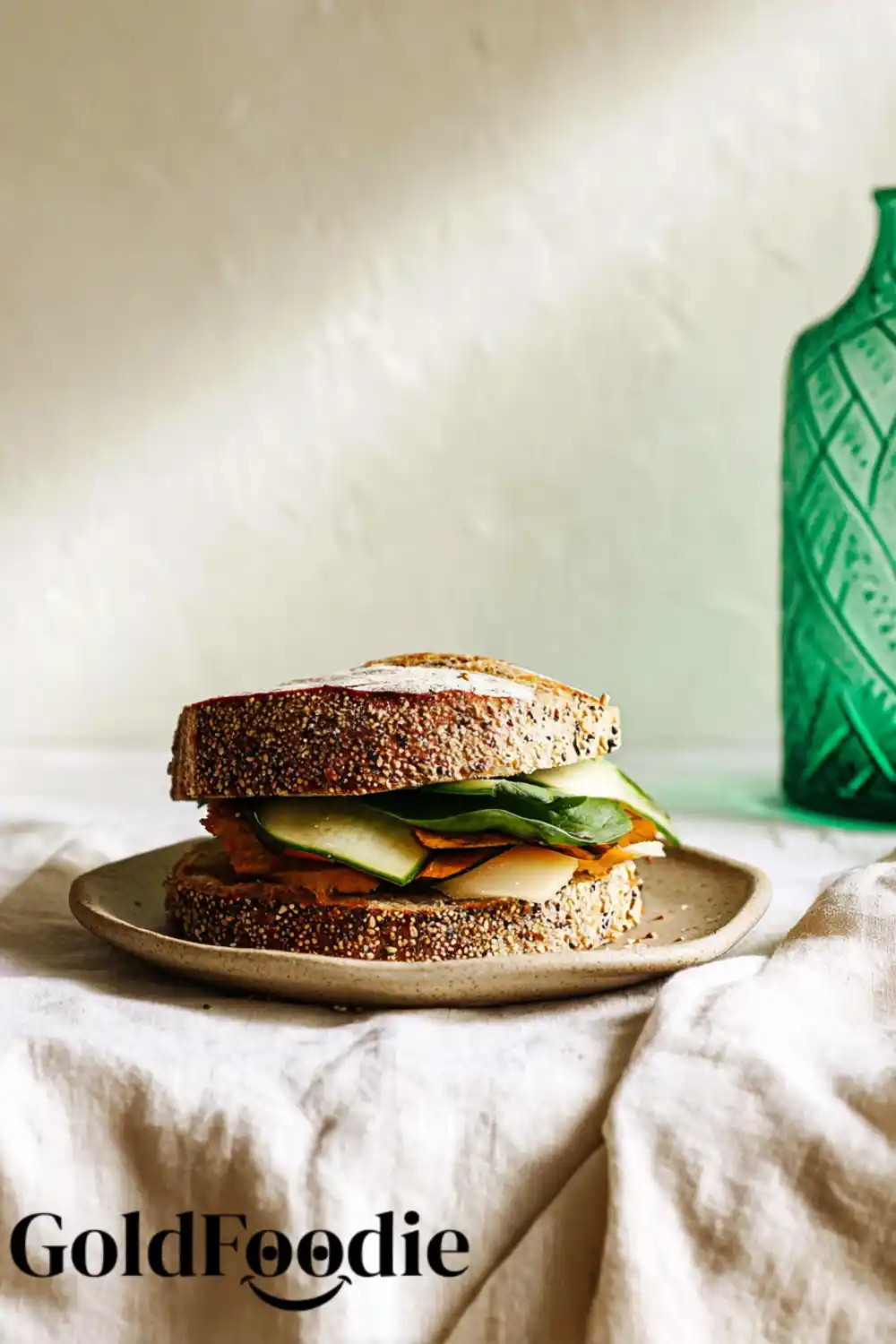
Final Thoughts
Baking your own Buckwheat Bread allows you to enjoy a loaf that is both satisfying and supportive of your health goals. This recipe delivers a soft texture, rich flavor, and a nutrient profile that works well for individuals managing their blood sugar. It is simple to prepare and offers the comfort of fresh, homemade bread without compromising on dietary needs.
If you try this Buckwheat Bread, share your experience in the comments and leave a rating. Your feedback helps others who are looking for a dependable recipe. Post your photos on Instagram and tag us with #GoldFoodie so we can see your creations and celebrate your success in the kitchen.
Medical Disclaimer
The information provided in this Buckwheat Bread recipe is for educational purposes only. It is not intended to replace professional medical advice, diagnosis, or treatment. Always seek guidance from your physician or another qualified health professional regarding any questions you may have about a medical condition or dietary changes. Never ignore professional advice or delay seeking it because of something you have read here.
Diabetes Nutrition Specialist | Healthy Diet Advocate | Founder of GoldFoodie.
My passion for nutrition began with a deeply personal journey supporting my father through his battle with diabetes. Watching his daily struggles made me realize how powerful the right food choices can be in improving quality of life. That experience drove me to dedicate my career to helping others live healthier, more balanced lives.






